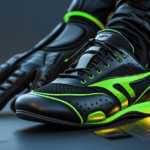Have you ever arrived at the track, heart pumping with excitement for race day, only to discover you’ve forgotten something crucial? I certainly have, and let me tell you—that sinking feeling is something I wouldn’t wish on any fellow kart enthusiast.
After years of racing and countless facepalm moments of forgotten gear, I’ve developed a comprehensive pre-race gear checklist that has saved me from disaster more times than I can count. Whether you’re a seasoned racer or just getting your wheels dirty in the karting world, this guide will ensure your equipment is track-ready every single time.
Why a Pre-Race Gear Checklist Is Essential
Before diving into the specifics, let’s talk about why having a systematic pre-race gear checklist matters so much in go-karting.
Racing isn’t just about skill—it’s about preparation. Even the most talented drivers can be sidelined by equipment failures or missing gear. A thorough pre-race gear checklist:
- Reduces race day stress
- Prevents last-minute scrambling
- Ensures safety compliance
- Maximizes your performance potential
- Saves you money (by avoiding on-site emergency purchases)
One weekend last summer, I showed up to a regional championship without my racing gloves. Not only was I embarrassed, but I had to shell out for an overpriced pair at the track shop that weren’t even my preferred style. That $85 mistake could have been avoided with a simple checklist.
Essential Safety Gear Checklist
Safety always comes first in karting. Here’s what should be at the top of your pre-race gear checklist:
1. Helmet
Your helmet is your most critical piece of safety equipment. Before each race:
- Check for any cracks or damage
- Ensure the visor is clean and scratch-free
- Verify proper fit and strap function
- Confirm it meets current safety certification standards
- Clean the interior to prevent odor buildup
If your helmet has been involved in any impact or is more than 5 years old, it might be time to consider a replacement. Learn more about when to replace your go-kart helmet to stay safe on the track.
2. Racing Suit
Your suit provides vital protection against both abrasion and fire:
- Inspect for tears, fraying, or damage
- Check zippers and closures
- Ensure it’s clean and free of oil or fuel stains
- Verify it fits properly (not too tight or loose)
I recommend having a backup suit if you’re racing regularly. Nothing’s worse than discovering a tear in your suit the morning of an important race!
3. Gloves
Racing gloves are essential for grip and protection:
- Check for worn areas, especially in the palm
- Test flexibility and comfort
- Ensure proper fit (snug but not restrictive)
- Verify grip material is still effective
4. Racing Shoes
Proper footwear is crucial for pedal feel and control:
- Inspect soles for wear
- Check laces or closure systems
- Look for any separation between sole and upper
- Ensure they’re dry and clean
5. Neck Support
A neck collar or brace provides crucial protection:
- Check for cracks or compression
- Ensure proper fit and closure
- Verify compatibility with your helmet
- Replace if showing signs of wear
Kart Mechanical Checklist
Your kart itself needs thorough inspection before race day:
1. Engine Inspection
- Oil level and condition
- Spark plug appearance
- Air filter cleanliness
- Fuel mixture (if applicable)
- Carburetor settings
- Exhaust system integrity
If you’re running a popular Predator 212cc engine, make sure you’re maintaining the optimal gear ratio for your Predator 212cc to get the best performance on your particular track.
2. Tire Check
Tires are your only contact with the track, so they deserve special attention:
- Proper pressure (hot and cold readings)
- Even wear patterns
- No cuts, bulges, or damage
- Appropriate compound for track conditions
- Valve stems and caps secure
For serious racers, tire preparation can make a significant difference in performance. I’ve seen races won and lost based on tire prep alone!
3. Brake System
Never compromise on your braking system:
- Pad thickness and condition
- Disc appearance (no cracks or heavy scoring)
- Fluid level and clarity
- Proper pedal feel and travel
- No leaks in the system
Understanding your go-kart disc brake setup is essential for both maintenance and performance tuning.
4. Chassis Inspection
- Frame integrity (no cracks or bends)
- All bolts tight and secure
- Proper alignment
- Bearings in good condition
- No excessive play in components
5. Chain and Sprockets
- Proper tension
- No stiff links
- Sprocket teeth in good condition
- Correct alignment
- Adequate lubrication
Tools and Spare Parts List
Even with perfect preparation, things can go wrong at the track. Here’s what to pack:
Essential Tools:
- Socket set (metric and standard)
- Allen/hex key set
- Screwdrivers (Phillips and flathead)
- Adjustable wrench
- Tire pressure gauge
- Tire pump or compressor
- Chain breaker/tool
- Spark plug socket
- Torque wrench
Critical Spare Parts:
- Spark plug
- Air filter
- Fuel filter
- Chain links
- Sprocket
- Brake pads
- Clutch shoes (if applicable)
- Assorted nuts, bolts, and zip ties
I once won a race simply because I had a spare clutch when my competitor didn’t. Having the right parts can be the difference between finishing first or not finishing at all.
Race Day Essentials
Beyond your kart and safety gear, don’t forget these race day necessities:
Personal Items:
- Water and hydration supplies
- Snacks and energy foods
- Sunscreen
- Weather-appropriate clothing
- Medications if needed
- First aid kit
Comfort and Convenience:
- Folding chair
- Canopy or shelter
- Towels
- Change of clothes
- Wet weather gear
Documentation:
- Track membership card
- Racing license
- Insurance information
- Emergency contacts
- Technical regulations
Pre-Race Equipment Inspection Table
Use this handy table as a quick reference on race day:
| Item | Check Points | Status |
|---|---|---|
| Safety Gear | ||
| Helmet | Condition, Certification, Fit | |
| Race Suit | Damage, Cleanliness, Fit | |
| Gloves | Wear, Grip, Fit | |
| Shoes | Soles, Closures, Condition | |
| Neck Support | Integrity, Fit, Wear | |
| Engine | ||
| Oil | Level, Condition | |
| Spark Plug | Gap, Condition | |
| Air Filter | Cleanliness | |
| Fuel | Level, Mixture | |
| Carburetor | Settings, Leaks | |
| Chassis | ||
| Frame | Cracks, Alignment | |
| Bolts | Tightness | |
| Bearings | Play, Condition | |
| Steering | Response, Play | |
| Brakes | ||
| Pads | Thickness, Wear | |
| Disc | Condition | |
| Fluid | Level, Condition | |
| Pedal | Feel, Travel | |
| Tires | ||
| Pressure | Correct PSI | |
| Condition | Wear, Damage | |
| Grip | Compound, Preparation | |
Download Checklist:
Weather Considerations for Your Checklist
Different weather conditions require different preparations. Go-karting in wet weather presents unique challenges that require specific gear and setup changes.
Wet Weather Additions:
- Rain tires
- Visor anti-fog treatment
- Rain suit or waterproof layer
- Kart setup adjustments
- Extra towels and dry clothes
Hot Weather Additions:
- Cooling vest or system
- Extra hydration
- Canopy or shade
- Ice packs
- Electrolyte supplements
Cold Weather Additions:
- Thermal underlayers
- Hand warmers
- Engine pre-heating plan
- Different tire compound or preparation
- Warmer break-in procedure
Final Pre-Race Checklist
Before heading to the track, do one final check:
- All safety gear packed and inspected
- Kart mechanically sound and ready
- Tools and spares organized and accessible
- Race day essentials packed
- Weather-specific items included
- Documentation and credentials ready
- Transportation logistics confirmed (fuel, loading, securing)
Maintaining Your Equipment Between Races
A good pre-race gear checklist isn’t just about race day—it’s about ongoing maintenance:
- Clean your gear after each race
- Store equipment properly
- Address wear issues immediately
- Keep maintenance records
- Update your spares inventory
Learning how to maintain your go-kart between races will extend the life of your equipment and improve your performance on track day.
Conclusion
A thorough pre-race gear checklist is the foundation of racing success. It eliminates the stress of forgotten items, prevents mechanical failures, and gives you the mental space to focus on what matters most—your racing performance.
I’ve gone from being the frazzled racer always borrowing tools and parts to being the prepared competitor others come to for help. That transformation didn’t happen because I became wealthier or more experienced—it happened because I developed and followed a comprehensive pre-race gear checklist.
Remember, champions aren’t just made on the track—they’re made in the garage, through careful preparation and attention to detail. Start using this checklist today, and watch how your race day experience transforms from chaotic to confident.

Goran, an experienced go-kart racer, fuels GoKartLife.com with his passion and expertise. He offers valuable insights and tips for fellow enthusiasts, fostering the growth of the go-kart community. Join Goran at GoKartLife.com and immerse yourself in this exhilarating sport.
Last modified: April 27, 2025



